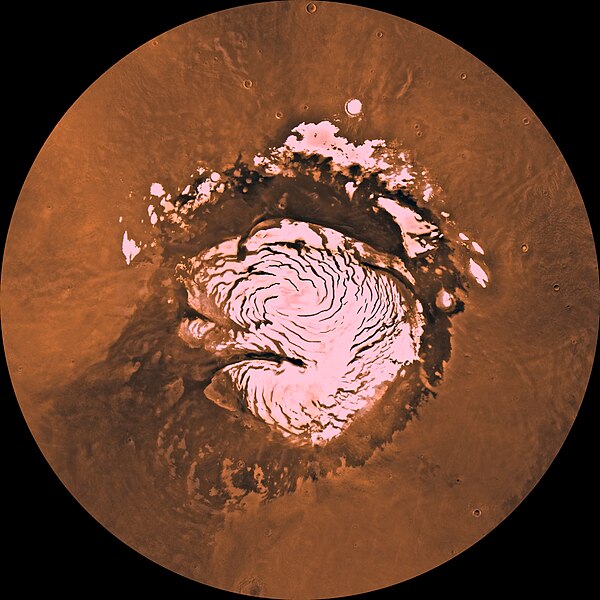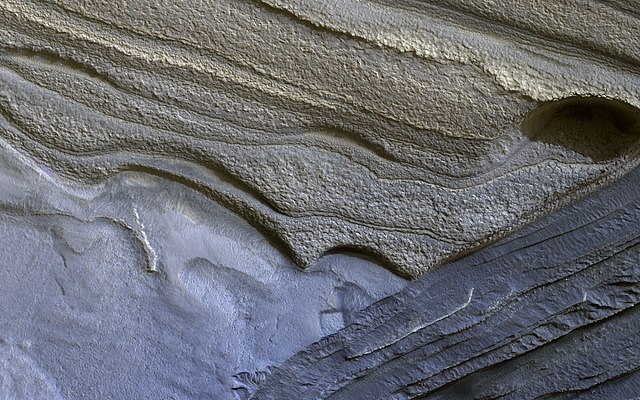Planum Boreum is the northern polar plain on Mars. It extends northward from roughly 80°N and is centered at 88.0°N 15.0°E. Surrounding the high polar plain is a flat and featureless lowland plain called Vastitas Borealis which extends for approximately 1500 kilometers southwards, dominating the northern hemisphere.
Viking mosaic of Planum Boreum and surrounds
False color HiRISE image of a side of the Chasma Boreale, a canyon in the polar ice cap. Light browns are layers of surface dust greys and blues are layers of water and carbon dioxide ice. Regular geometric cracking is indicative of higher concentrations of water ice.
False color HiRISE view of water ice layers in Olympia Rupes, believed by scientists to be preserving climate conditions of Mars dating back millions of years. Depicted width: 1.3 km (3⁄4 mi)
November 27, 2011
Mars is the fourth planet from the Sun. The surface of Mars is orange-red because it is covered in iron(III) oxide dust, giving it the nickname "the Red Planet". Mars is among the brightest objects in Earth's sky, and its high-contrast albedo features have made it a common subject for telescope viewing. It is classified as a terrestrial planet and is the second smallest of the Solar System's planets with a diameter of 6,779 km (4,212 mi). In terms of orbital motion, a Martian solar day (sol) is equal to 24.5 hours, and a Martian solar year is equal to 1.88 Earth years. Mars has two natural satellites that are small and irregular in shape: Phobos and Deimos.
Comparison: Earth and Mars
Curiosity's view of Martian soil and boulders after crossing the "Dingo Gap" sand dune
Valles Marineris, taken by the Viking 1 probe
Edge-on view of Mars atmosphere by Viking 1 probe








